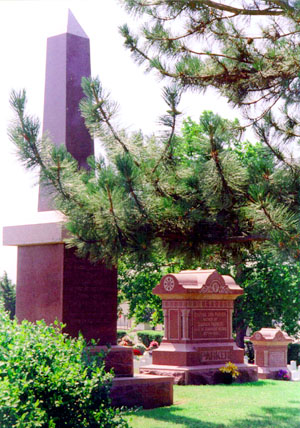Folk Figure. Sister of Quanah Parker. Her Comanche name was Toh-Tsee-Ah and she was one of three children born to Cynthia Ann Parker and a daring Comanche chief named Peta Nocona. Her mother was a white woman captured by the Comanche people when she was 9 or 10 years old. She was given to a family who raised her as their very own. She completely accepted the Comanche life style and refused to return to her white family. One of Prairie Flower's brothers grew up to be the great Comanche war chief, Quanah Parker. The other, Pecos, died in 1863 from the dreaded small pox. In December of 1860, the Texas Rangers "rescued" Cynthia and Prairie Flower and released them to the Parker family. Neither of them could adjust, nor wanted to adjust, to the white man's life style. Many attempts were made to escape and return to the Comanche people, but each time they were caught. She pined for her former life and her health deteriorated. In late 1863 or early 1864 she died, most likely of influenza. She was buried in the Fosterville Cemetery in Henderson County, Texas. She was soon to be joined by her mother and they lay side-by-side for forty-six years. Her brother, Quanah, had their bodies moved in 1910 to the Post Oak Cemetery in Oklahoma. In 1911, Quanah was buried next to his mother as was his wish. In 1957, all three bodies were reinterred on Chief's Knoll in the Fort Sill Post Cemetery. There they lay with many of the famous chiefs of the Indian Territory.
Folk Figure. Sister of Quanah Parker. Her Comanche name was Toh-Tsee-Ah and she was one of three children born to Cynthia Ann Parker and a daring Comanche chief named Peta Nocona. Her mother was a white woman captured by the Comanche people when she was 9 or 10 years old. She was given to a family who raised her as their very own. She completely accepted the Comanche life style and refused to return to her white family. One of Prairie Flower's brothers grew up to be the great Comanche war chief, Quanah Parker. The other, Pecos, died in 1863 from the dreaded small pox. In December of 1860, the Texas Rangers "rescued" Cynthia and Prairie Flower and released them to the Parker family. Neither of them could adjust, nor wanted to adjust, to the white man's life style. Many attempts were made to escape and return to the Comanche people, but each time they were caught. She pined for her former life and her health deteriorated. In late 1863 or early 1864 she died, most likely of influenza. She was buried in the Fosterville Cemetery in Henderson County, Texas. She was soon to be joined by her mother and they lay side-by-side for forty-six years. Her brother, Quanah, had their bodies moved in 1910 to the Post Oak Cemetery in Oklahoma. In 1911, Quanah was buried next to his mother as was his wish. In 1957, all three bodies were reinterred on Chief's Knoll in the Fort Sill Post Cemetery. There they lay with many of the famous chiefs of the Indian Territory.
Bio by: Tom Todd
Family Members
Advertisement
See more Flower memorials in:
Explore more
Sponsored by Ancestry
Advertisement







